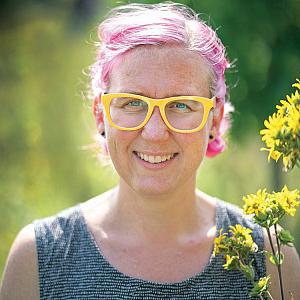Powerhouse Project makes the World Architecture Festival Shortlist
This past June, the Powerhouse was shortlisted for live presentation, in the category of “Health-Future Project,” at the prestigious World Architecture Festival.
Started in 2008, the World Architecture Festival is the largest architectural award program in the world, attracting nearly 2,000 attendees for three-days of keynote speeches, design presentations, and award ceremonies. This year’s festival takes place November 28-30 in Amsterdam and has attracted record participation. More than 1,000 projects were submitted for consideration, but only 536 projects made the shortlist. The Powerhouse is one of six projects competing in the “Health-Future Project” category; architects from Studio Gang will travel from Chicago to present their design live to a judging panel of 130+ architects and experts. Winners will advance to compete for the top award: “Future Project of the Year.”
The 2017 winner of the Health-Future Project award was “Desa Semesta,” a philanthropic health recovery center designed by Magi Design Studio. Located in Bogor, Indonesia, Desa Semesta was designed to help patients through the final stage of mental health recovery. According to the judges, Desa Semesta was chosen because the architecture “show[ed] a strong sense of social and environmental responsibility, with the existing terrain and trees being preserved without compromising the architecture. The center is accessible via a perforated bridge.”
How does the Powerhouse stack up as a model of socially and environmentally responsible architecture?
The idea for the Powerhouse project stemmed from a desire to provide Beloit students with a much-needed central gathering space on campus—the last official student union closed at the end of 1984. However, once completed, the Powerhouse is envisioned to be much more than “just” a new student union. As project manager Dan Schooff shares in this interview clip, the Powerhouse is being uniquely designed to enhance student life in a rich variety of ways.
The Powerhouse is also unique, of course, because of its original purpose as a coal-burning power plant that provided electricity for residents of the city of Beloit. While the inside of the building is largely being overhauled to include educational and recreational spaces, the Powerhouse will still feature elements from the 1940s design. Modern 21st century features like a three-lane running track will coexist among 20th century details like industrial coal bunkers and steel tubing and the original tile flooring. Preserving these historic details made the project eligible for approximately $10 million in federal and state tax credits, cementing the college’s commitment that no tuition dollars would be used to fund the Powerhouse’s construction.
Converting the decommissioned power plant into a 120,000 sq. ft. student center, while preserving elements of the original structure, presented some challenges in efficient energy use. Luckily, Jeanne Gang’s award-winning firm is known for their innovative responses to issues of environmental and ecological sustainability. Studio Gang’s design for the Powerhouse involves a heating and cooling system that will transfer kinetic energy from the adjacent Rock River to a network of pipes that will keep the building at a constant temperature year-round.
Once completed, members of the campus community will be able to access the Powerhouse from a pedestrian bridge that crosses over Pleasant St./Hwy 51 to the residential side of campus. The Powerhouse will also connect to the city by an 800-ft. long riverwalk that spans the east side of the building. In this clip, Dan explains how when all of the Powerhouse’s interesting elements come together, it will be “a place like no other.” Lead architect Jeanne Gang echoed that sentiment in award-winning architecture and design magazine, dezeen: “Our hope is that by reclaiming the Beloit waterfront for people, our project will inspire other communities around the globe to see human well-being as vitally interconnected with a healthy and clean environment.”



